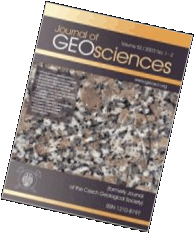 Export to Mendeley
Export to MendeleyOriginal Paper
Late-Variscan extensional collapse of the thickened Moldanubian crust in the southern Bohemia
Journal of the Czech Geological Society, volume 41 (1996), issue 3-4, 123 - 138
Lithotectonic structure of the Moldanubian Zone, resulting from Variscan overthrusting of analogues of the Gföhl Unit over Montonous and Varied Groups, has been affected by NW-vergent late-extensional tectonics on a crustal scale. Major intramoldanubian extensional fault - the Podolsko detachement - as a part of the Vodňany-Týn nad Vltavou fault zone, has exhumed the Monotonous Group, and juxtaposed the Gföhl and Monotonous Units which were originally separated each from other by the Varied Group. Estimated minimum throw along this late fault is about 5 km. The intrusion of granitoid magmas could have been partly synchronous with the extensional movements which continued after emplacement of the granite intrusives. Microstructural study of small granitic bodies located along shear zone boundary reveals transition from deformed granites with C/S fabric, through C/S orthogneiss, banded orthogneiss to ultramylonites. Sharply localized ultramylonitic shear zones display transition from amphibolite facies conditions to greenschist facies under the same kinematic regime. Quartz C-axis analysis shows that prism ´´ slip system was dominant for all stages and intensities of deformation. C-axis pattern is controlled by finite strain geometry rather than by kinematical framework at least during early stages of deformation. This indicates that the development of C/S planes could not be synchronous and that determination of kinematics using quartz microfabric should be interpreted with care
Webdesign inspired by aTeo. Hosted at the server of the Institute of Petrology and Structural Geology, Charles University, Prague.
ISSN: 1803-1943 (online), 1802-6222 (print)
email: jgeosci(at)jgeosci.org


IF (WoS, 2023): 1.1
5 YEAR IF (WoS, 2023): 1.5
Policy: Open Access
ISSN: 1802-6222
E-ISSN: 1803-1943